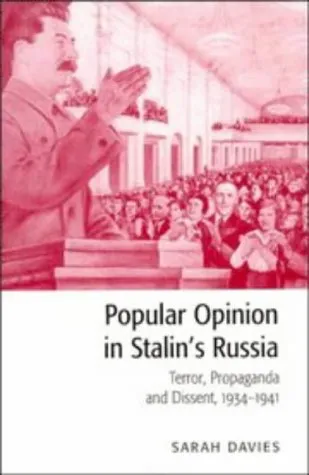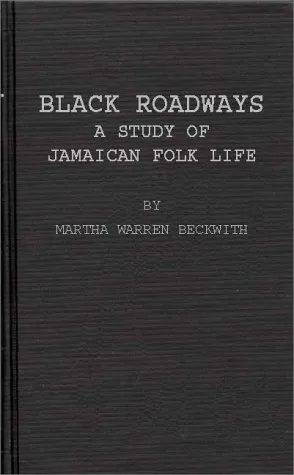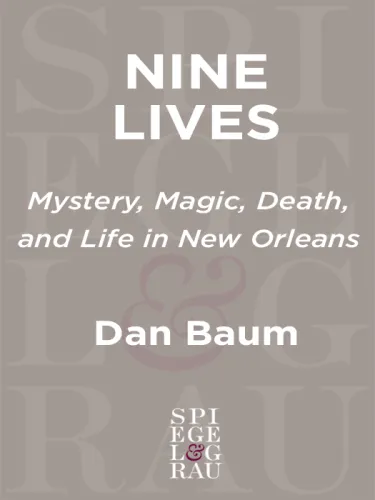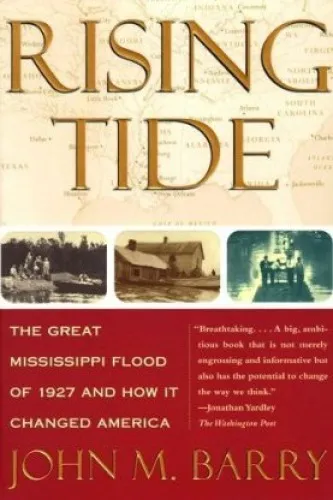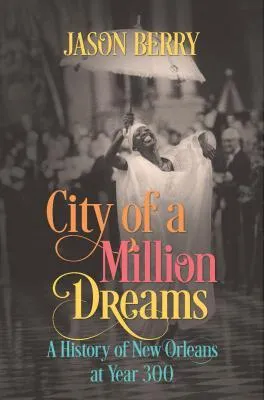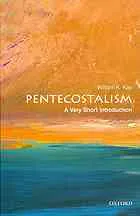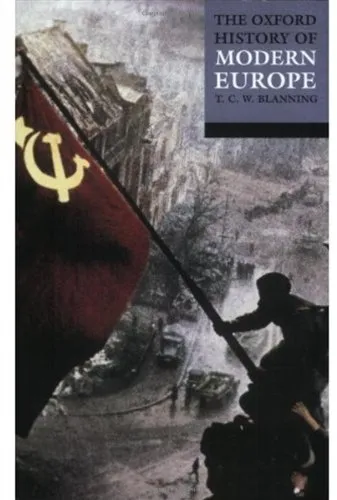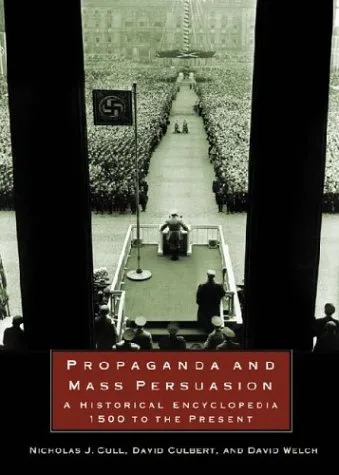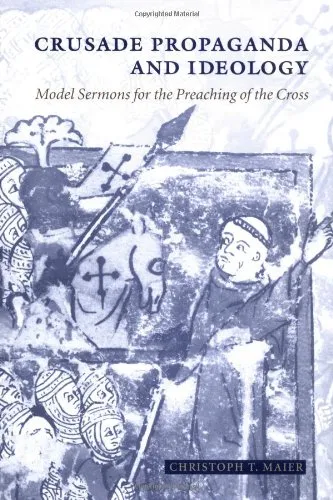Popular Opinion in Stalin's Russia: Terror, Propaganda and Dissent, 1934-1941
4.3
بر اساس نظر کاربران

شما میتونید سوالاتتون در باره کتاب رو از هوش مصنوعیش بعد از ورود بپرسید
هر دانلود یا پرسش از هوش مصنوعی 2 امتیاز لازم دارد، برای بدست آوردن امتیاز رایگان، به صفحه ی راهنمای امتیازات سر بزنید و یک سری کار ارزشمند انجام بدینکتاب های مرتبط:
خلاصه تحلیلی کتاب
کتاب Popular Opinion in Stalin's Russia: Terror, Propaganda and Dissent, 1934-1941 حاصل پژوهش جامع و چندساله درباره پیچیدگیهای رابطه میان جامعه شوروی و دولت استالین در دورهای که رژیم با ترکیبی از خشونت، کنترل فرهنگی و تبلیغات گسترده کوشید افکار عمومی را شکل دهد. این اثر به جای تکیه صرف بر اسناد رسمی یا روایتهای نخبهگرایانه، مجموعهای غنی از منابع آرشیوی، مکاتبات شخصی، گزارشهای محلی و اسناد سازمانهای مردمی را کنار هم میآورد تا تصویری چندبُعدی از آن سالها ارائه دهد.
کتاب به این پرسش اساسی میپردازد که در دل «Terror» و تحت سایه شدید «Propaganda»، واکنش واقعی مردم چه بود؟ آیا آنها منفعلانه میپذیرفتند یا با اشکال گوناگون «Dissent» واکنش نشان میدادند؟ نویسنده با رویکردی تحلیلی و انتقادی، پرده از لایههای مختلف رضایت، ترس، مقاومت، و حتی طنز پنهان در جامعه برمیدارد. این توازن میان اسناد رسمی و روایتهای شخصی، برای پژوهشگران تاریخ اجتماعی شوروی و سیاستگذاری فرهنگی رژیم استالین ارزش دوچندان دارد.
نکات کلیدی و کاربردی
یکی از نکات کلیدی این کتاب، اهمیت تحلیل افکار عمومی در رژیمهای اقتدارگرا است. نویسنده نشان میدهد که دستگاه تبلیغات استالین چگونه از رسانه، هنر و آموزش بهره گرفت تا روایت رسمی را جا بیندازد و مخالفان را بیصدا کند. با این حال، لزوماً همه مردم پذیرای این روایتها نبودند و اشکال ظریف اعتراض شکل گرفت، از لطیفههای سیاسی تا بیاعتنایی به رویدادهای رسمی.
برای کسانی که به مطالعه تاریخ اجتماعی علاقه دارند، این اثر نمونهای از تلفیق دقیق پژوهش آرشیوی با تحلیل نظری است. علاوه بر آن، کتاب الهامبخش پژوهشهای تطبیقی در زمینه مدیریت افکار عمومی و مقاومت فرهنگی در دیگر جوامع نیز هست.
نقلقولهای ماندگار
برخی از جملات و ایدههای مطرحشده در کتاب، به دلیل عمق و دقتشان شایسته یادآوری مکرر هستند. این نقلقولها نهتنها دریچهای به ذهنیت نویسنده باز میکنند، بلکه چکیدهای از فضای فکری و اجتماعی آن دوره را به نمایش میگذارند.
سیاست در اتحاد شوروی استالین، بیش از آنکه یک گفتوگو باشد، یک نمایش تمامعیار قدرت بود. نامشخص
حتی در تاریکترین زمانها، زمزمهها و لطیفهها راهی برای بیان نارضایتی بودند. نامشخص
چرا این کتاب اهمیت دارد
اهمیت کتاب در آن است که به یکی از نقاط کور تاریخنگاری میپردازد: صدای مردم عادی در دل نظامی که تمام ابزارهای کنترل را در اختیار داشت. بسیاری از آثار تاریخی بر ساختار قدرت یا بر تصمیمات رهبران تمرکز دارند، اما این کتاب به لایههای غیررسمی و کمتر دیدهشده میپردازد. همین ویژگی آن را برای تاریخدانان، جامعهشناسان و علاقهمندان به علوم سیاسی جذاب میکند.
از منظر کاربردی، مطالعه کتاب به پژوهشگران ابزار مفهومی میدهد تا بتوانند سازوکار شکلگیری و تغییر افکار عمومی را در سیستمهای بسته تحلیل کنند. این یادآور میشود که حتی در شدیدترین شرایط، درزهایی در دیوار کنترل وجود دارد که از طریق آن مقاومت و خلاقیت مردمی عبور میکند.
نتیجهگیری الهامبخش
در پایان، Popular Opinion in Stalin's Russia: Terror, Propaganda and Dissent, 1934-1941 نهفقط یک روایت تاریخی، بلکه دعوتی است برای تأمل درباره رابطه پیچیده میان قدرت و جامعه. مطالعه این اثر به ما یادآور میشود که حتی در سختترین دورهها، افکار عمومی میتواند مسیر خود را
Analytical Summary
This scholarly work, Popular Opinion in Stalin's Russia: Terror, Propaganda and Dissent, 1934-1941, offers a penetrating analysis of Soviet society during one of its most intense and tumultuous periods. Through a disciplined and evidence-based narrative, the book examines how ordinary citizens experienced, interpreted, and responded to the mechanisms of state power under Joseph Stalin. Structured around key events and themes of the late 1930s—from the Great Terror to the prelude to the Second World War—it captures the intersection between the regime’s ideological control and the authentic voices of its people.
Drawing on extensive archival research from formerly inaccessible Soviet sources, the author engages with both official records and private testimonies. This dual lens reveals the complexity of public sentiment in the USSR, moving beyond the monolithic portrayal of a uniformly compliant population. Instead, the narrative foregrounds the nuanced reality: a society where fear, loyalty, cynicism, and dissent coexisted and often overlapped. This breadth makes the work essential for understanding Soviet public opinion and Stalinist propaganda in their most developed and repressive phase.
The study is meticulously contextualized within broader Soviet history, aligning specific public attitudes with the strategic aims of the regime's propaganda machine, mass mobilization efforts, and coercive tactics. The chronological scope from 1934 to 1941 offers readers a clear frame to assess shifts in sentiment, particularly in response to catastrophic events such as purges, show trials, and military threats.
Key Takeaways
Readers of Popular Opinion in Stalin's Russia: Terror, Propaganda and Dissent, 1934-1941 will arrive at several pivotal insights that resonate for historians, political scientists, and sociologists alike.
First, the Great Terror was not merely an imposition from above; it reverberated through the social fabric, shaping interpersonal relations and community dynamics. Second, propaganda functioned not just as a tool of the state but as a medium through which citizens negotiated their identities in relation to the regime. Third, dissent took many forms—spoken, written, and silently enacted—each revealing the contours of resistance under authoritarian conditions. Fourth, documented public opinion shows a spectrum of reactions, from outright support to deeply veiled criticism. Finally, the period’s proximity to global conflict added urgency to both compliance and defiance, intertwining domestic and foreign policy perceptions in the public mind.
Memorable Quotes
“Fear and loyalty often lived side by side in the Soviet heart, bound together by necessity.”Unknown
“Propaganda saturated daily life not merely as instruction, but as the language of survival.”Unknown
“Even a whisper could be resistance, but only if heard by the right ears.”Unknown
Why This Book Matters
The value of this study lies in its capacity to humanize living under Stalin’s rule, bridging the gap between macro-political analysis and micro-level human experience.
Academics and professionals seeking to comprehend Soviet history will find the book’s intricate interplay of terror, propaganda, and dissent a compelling lens. It challenges simplistic binaries of victim and collaborator, instead mapping a terrain where every citizen navigated complex moral and pragmatic decisions. Furthermore, the methodological reliance on archival Soviet documents ensures the insights rest on verifiable evidence, avoiding the pitfalls of speculation. Information unavailable regarding specific awards or distinctions underscores the book’s position as a research-driven text whose merit lies in its scholarship rather than external recognition.
Inspiring Conclusion
Ultimately, Popular Opinion in Stalin's Russia: Terror, Propaganda and Dissent, 1934-1941 invites readers to re-examine one of the most ideologically charged and personally perilous eras in modern history.
By integrating the primary narratives of state authority with the layered experiences of its people, the work offers both a cautionary tale and a foundation for future scholarship on political repression and public opinion. Readers are encouraged to delve into its pages, share its findings with peers, and discuss the enduring relevance of its themes to contemporary analyses of authoritarian governance. In doing so, one contributes not only to historical understanding but also to the ongoing discourse on power, ideology, and human resilience.
دانلود رایگان مستقیم
شما میتونید سوالاتتون در باره کتاب رو از هوش مصنوعیش بعد از ورود بپرسید
دسترسی به کتابها از طریق پلتفرمهای قانونی و کتابخانههای عمومی نه تنها از حقوق نویسندگان و ناشران حمایت میکند، بلکه به پایداری فرهنگ کتابخوانی نیز کمک میرساند. پیش از دانلود، لحظهای به بررسی این گزینهها فکر کنید.
این کتاب رو در پلتفرم های دیگه ببینید
WorldCat به شما کمک میکنه تا کتاب ها رو در کتابخانه های سراسر دنیا پیدا کنید
امتیازها، نظرات تخصصی و صحبت ها درباره کتاب را در Goodreads ببینید
کتابهای کمیاب یا دست دوم را در AbeBooks پیدا کنید و بخرید
1080
بازدید4.3
امتیاز0
نظر98%
رضایتنظرات:
4.3
بر اساس 0 نظر کاربران
Questions & Answers
Ask questions about this book or help others by answering
No questions yet. Be the first to ask!
